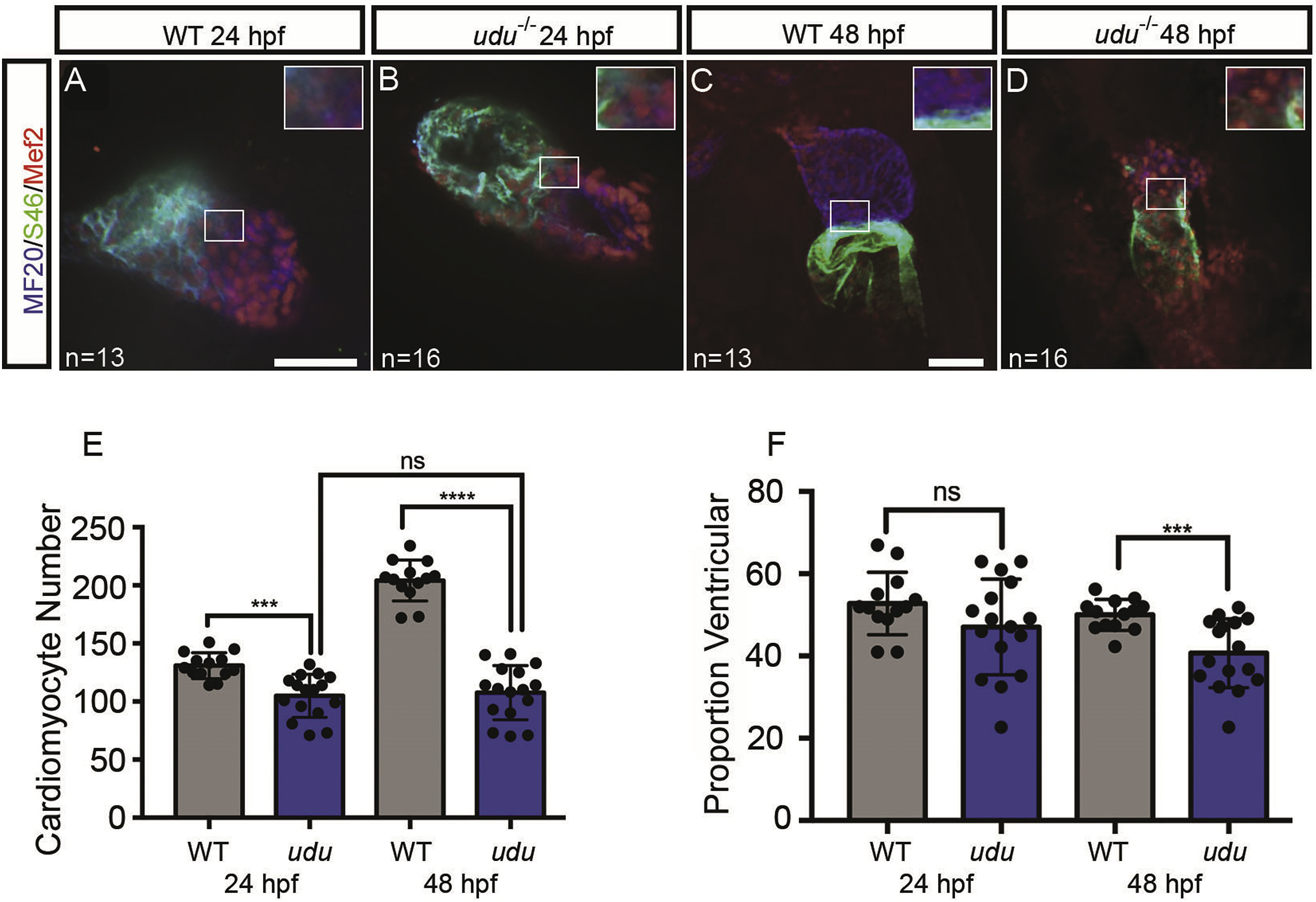Fig. 2 Loss of zygotic Gon4l function affects cardiac chamber patterning after heart tube formation and results in a reduction in the number of cardiomyocytes. Immunofluorescence confocal images of cardiac chambers at 24 hpf using MF20 (blue, myocardium) and S46 (green, atrium) and Mef2 (red, cardiomyocyte nuclei) antibodies to mark the cardiac chambers in WT (A, C) and udu?/? mutant (B, D) embryos at 24 hpf (A, B) and 48 hpf (C, D). Cardiomyocyte number (E) and percentage of total cardiomyocytes with ventricular identity (F) at 24 hpf and 48 hpf in WT (grey) and udu?/? mutant (blue) embryos. ?p ?< ?0.05, ??p ?< ?0.01, ???p ?< ?0.001, ????p ?< ?0.0001, error bars ?= ?SEM. Scale bars represent 50 ??m. Inserts show a 2X magnification from images.
Reprinted from Developmental Biology, 462(2), Budine, T.E., de Sena-Tomás, C., Williams, M.L.K., Sepich, D.S., Targoff, K.L., Solnica-Kreze, L., Gon4l/Udu Regulates Cardiomyocyte Proliferation and Maintenance of Ventricular Chamber Identity During Zebrafish Development, 223-234, Copyright (2020) with permission from Elsevier. Full text @ Dev. Biol.

